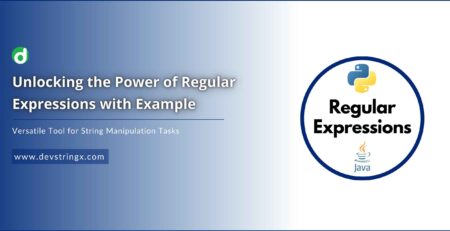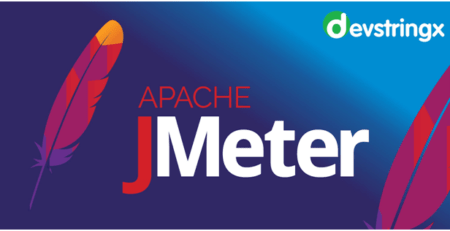What are Effort Estimation Techniques In Software Testing?
Effort Estimation Techniques In Software Testing
In the realm of software testing, effort estimation plays a crucial role in planning and executing testing activities. Determine the resources, time, and budget needed to successfully execute a software testing project with the aid of effort estimating techniques.
Testing teams may optimize their workflow, allocate resources wisely, and produce high-quality software within the set deadlines by precisely calculating the effort required.
1) Expert Judgment
Expert judgment, which draws on the skills and expertise of seasoned experts in the field of software testing, is a frequently used technique in work estimation. Testing teams can learn a lot about the time needed for different testing activities by talking to professionals who have worked on comparable projects in the past. To give accurate estimates, these specialists do thorough analyses of variables such as project complexity, scope, and testing team members’ skills. Expert judgment improves the precision of effort estimation by minimizing uncertainty.
2) Analogous Estimation
Analogous estimate, commonly referred to as historical or top-down estimating, compares the ongoing software testing effort to earlier initiatives that have already been completed. This method makes the assumption that similar projects will take a similar amount of effort. Testing teams can estimate the effort for the present project by looking at historical data and benchmarking against earlier initiatives. When there is a lack of specific project details or a shortage of estimation time, analogous estimation is particularly helpful.
3) Parametric Estimation
A quantitative method called parametric estimation uses statistical analysis and mathematical models to calculate effort. Through this method, a connection is made between project metrics including software size, project complexity, and testing team productivity rate and effort. By taking into account these variables, parametric estimation determines effort using pre-established formulas or algorithms. For this method to produce accurate estimates, data must be collected and analyzed precisely.
4) Three-Point Estimation
The three-point estimate method approaches effort estimation more probabilistically. It entails taking into account three effort estimates: the most likely estimate (M), the pessimistic estimate (P), and the optimistic estimate (O). Using the formula (O + 4M + P) / 6, the anticipated effort is then determined using these estimates. The three-point estimating technique offers a more thorough and risk-aware effort assessment by taking into account the best-case, most likely, and worst-case scenarios.
5) Function Point Analysis
A common method for estimating work is called Function Point Analysis (FPA), especially in projects that use a structured development approach. FPA assesses the functionality offered by the software and weights various components according to their complexity. FPA assists in estimating the time needed to design, implement, and test the software by quantifying the functionality. This method necessitates a deep comprehension of the program specifications as well as the capacity to disassemble a system into its working parts.
6) Bottom-Up Estimation
The testing work is divided into smaller pieces, such as test cases or modules, and each unit’s testing effort is estimated. The total effort for the testing activity is then calculated from the individual estimations that have been pooled. When there is a clear understanding of the testing components and their effort needs, the bottom-up estimate is helpful.
7) Top-Down Estimation
Top-Down estimation starts with an overall estimate for the testing activity and then allocates effort to different components or phases based on expert judgment or historical data. It is a high-level estimation approach that provides an initial estimate for planning purposes. Top-Down estimation is useful when there is limited detailed information available or when time constraints are tight.
8) Wideband Delphi Technique
The Wideband Delphi technique combines the benefits of the Delphi technique with group decision-making. In this technique, a group of experts provides individual estimates anonymously. Following the sharing of the estimates, experts participate in a facilitated discussion to discuss the estimates. Up until an agreement is obtained, the process is iterative. The Wideband Delphi approach improves communication and knowledge sharing while minimizing estimating bias.
Good to Read:- Monkey Testing: Example, Tools, Advantages & Disadvantages
Importance of Effort Estimation in Software Testing
- For the following reasons, effort estimation is essential to software testing:
- Resource Allocation: Organizations may allocate the proper resources to testing operations, guaranteeing optimal utilization and preventing bottlenecks, with the help of accurate estimation.
- Time management: Estimation aids in establishing realistic testing deadlines, avoiding delays, and guaranteeing on-time delivery.
- Budgeting: By estimating work, organizations can allocate the right amount of money for testing and avoid overspending and financial limits.
- Risk Management: Effective estimating helps to foresee future risks and problems, enabling for the proactive mitigation of those risks.
- Project Tracking: Tracking the progress of testing operations is made possible through estimation, which also enables efficient monitoring and control.
Limitations and Challenges of Effort Estimation
- Software testing effort estimation is not without its restrictions and difficulties. Typical difficulties include:
- Uncertain Requirements: It might be difficult to estimate effort accurately when requirements are uncertain or constantly changing.
- Limited Historical Data: The accuracy of estimation might be impacted by a lack of historical data or data that does not accurately reflect the features of the current project.
- Complexity: Due to the numerous interdependencies and unknowns involved, estimating the effort required for very complex projects or technologies can be difficult.
- Subjectivity: Expert judgment-based estimation procedures may be prone to personal biases or beliefs.
- Time Restrictions: Strict deadlines and time pressure can limit the time available for careful effort estimation, perhaps resulting in errors.
Best Practices for Effort Estimation in Software Testing
Take into account the following best practices to increase the precision of work estimation in software testing:
-
Collect and Analyze Historical Data
Gathering and Examining Historical Data Keep a database of data from previous projects and analyze it to spot trends, patterns, and things that affect effort.
-
Get Domain Experts Involved
To achieve this through the estimation, get advice from subject-matter specialists who are familiar with the project’s requirements and intricacies.
-
Estimation Iteratively
Iteratively perform estimating, allowing for modifications and improvements as new information becomes available.
-
Document Constraints and Suppositions
To promote transparency and control expectations, it is important to clearly document all of the assumptions, restrictions, and limitations related to the effort estimation process.
-
Validate and Update Estimates
As the project develops and new information becomes available, continuously validate and update estimates.
-
Utilise Multiple Estimating Strategies
Combine various estimating strategies to take advantage of their advantages and make up for their drawbacks.
-
Review Estimation Variances and Gain Knowledge
Review and analyze the discrepancy between the estimated and actual effort on a regular basis to improve estimating methods and forecast accuracy.
Good to Read:- Gorilla Testing: Definition, Features, Advantages, Disadvantages
FAQs
Q1. Why do software testing efforts need to be estimated?
Software testing effort estimation is used for project tracking, resource allocation, budgeting, risk management, and planning. It assists organizations in estimating the amount of time, money, and effort needed to properly accomplish testing tasks.
Q2. Can methods for estimating work be applied to other software development tasks?
Techniques for estimating effort can be used for a variety of software development tasks, such as requirement collecting, design, coding, and maintenance. However, depending on the activity, different methods and parameters might be employed.
Q3. How can I increase the effort estimation’s precision?
Collecting and analyzing historical data, involving domain experts, doing iterative estimation, documenting assumptions and restrictions, validating and updating estimates, using a variety of estimation approaches, and reviewing and learning from estimation deviations are all ways to increase estimation accuracy.
Q4. Are there any automated methods for calculating software testing efforts?
Yes, a few testing applications and technologies provide automated work estimation functionality. These techniques provide a precise estimation of testing efforts using statistical models, algorithms, and historical data.
Q5. How do requirements limits impact effort estimation?
Because of the vague or changing needs, accurate job estimation is difficult. The estimation accuracy increases when the criteria are strengthened and narrowed down. The development of clear communication channels and collaboration with stakeholders is essential for delineating requirements and reducing uncertainty.














